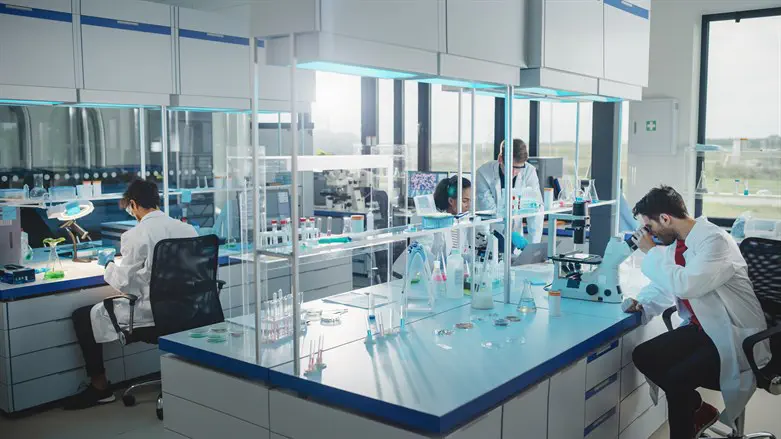
If you have a tight budget, maintaining equipment in peak condition is crucial for your organization or laboratory.
Equipment cannot be bought frequently, so it needs to be properly managed. Highly accurate data is generated by well-maintained lab equipment. The assistance of qualified personnel is required for maintaining the proper operation of your equipment. Make sure you follow maintenance tips so that there will be smooth functioning of activities in your laboratory. Neglecting some things while taking care of your equipment may lead to problems in the longer run. To avoid these problems, follow these:
INSPECTION:
When testing equipment that isn't used frequently, inspection is important since it allows you to catch faults before they become a problem.
CALIBRATION
Maintaining laboratory apparatus requires regular calibration to ensure the accuracy and reliability of the data collected. The incorrect result might be generated by measurement errors in the periodic calibration of equipment. Evaluate the accuracy of the equipment and make modifications. Calibration may be easily tracked with the use of specifically designed labels attached to the equipment and a logbook.
CLEAN-UP:
After using the laboratory equipment, make sure that it is sanitized. In order to guarantee that your samples and data are not contaminated by any pollutants, cleaning is necessary. Lab management should design a clear and comprehensive cleanliness plan with clear guidelines to ensure that each unit of laboratory apparatus is thoroughly cleaned and with the right process. Keep in mind:
- Certain equipment may need specific instructions, so ensure the manufacturer's instructions are carefully followed.
- Specially laboratory-designed cleansing solutions are made use of and not normal ones.
LOGGING:
A personal account of when and how an issue occurred is important to solve it; thus, keeping track of who has used the equipment and what work was done is essential. Handwritten or digital logbooks are available.
REPAIRING:
Repairing and refurbishment of lab equipment can turn out to be very effective. It not only saves your expenses but also reduces waste. With repairs, you can renew your equipment and make it as good as new hence saving money. Keep in mind:
- Equipment that cannot be fixed or reconditioned should be substituted.
- If it is necessary to clean and grease the equipment along with repairing.
- The equipment that requires fixing does not pose a risk to the lab.
New and used laboratory equipment.
Sometimes you will not be able to repair a device and will have to look for a new one. The market is flooded with a variety of cheap and expensive models and sometimes you will look more at the cheapest. But it is very important to know what your needs are, Because the cheaper ones may have less equipment, fewer options, and also break down faster.
When working in the lab it is very important to keep the workers safe.
- A suitable and protected outfit
- Personal jewelry and accessories should be left out of the lab
- Use of face shield
- Maintaining hygiene. It is important to wash hands before and after each work
- All employees must know the procedures in case of a laboratory accident
- All workers must know the emergency exits
-Turn off all devices at the end of work
Hazardous materials should be stored in safety cabinets
Employees should be aware of the dangers of the materials they use
-You should not work alone in the lab but several people at the same time
Safety instructions for some of the laboratory equipment
1. Safety instructions for using the autoclave:
- Do not open the door or the drain tap while operating.
- Do not pour liquids into or on the appliance but only into the boiler.
- Do not attach the device to the wall, leave a space of at least 35 cm behind and on the sides of the device.
- Stopping sterilization in an emergency, will be done by switching off the device from the switch
-The main activation, waiting until the value on the pressure clock shows 0 and only then can the door be opened.
- Do not open the cell door during a process or at all, when the pressure value in the pressure clock is non-zero.
- Do not place things on the device.
-The device must be kept away from heat and water sources.
2. General instructions for using a laboratory hotplate:
• It is mandatory to supply air to the hotplate, whenever the hotplate is in use or close to acids.
• Insertion of chemicals / acids / chemicals into the plate and control box will cause them severe damage.
• At the end of the work, keep the laboratory hot plate and control box away from the acid source as much as possible.
• The control box is not protected against chemicals and should therefore be kept away from sources of acids, vapors, acids and chemicals at all times.
• Connect the control box to the grounded mains and check that the mains voltage and the heating element power match the data specified on the sticker
The identification on the control box.
• If a fuse burns, replace only the same type of fuse (current and voltage).
• Do not place objects on the control box.
• A K-type temperature sensor must be connected to the control box at the correct polarity
• Do not use the device in an explosive environment.
• If the feed fuse is damaged, it must be replaced in the service laboratory
3. Safety instructions when working with a large laboratory shaker
• Due to the large weight of the shaker, it should be placed on the floor or
On a stable and strong table only.
• The shaker mechanism contains heavy weights, which can be shocking
The table used at high speeds and in general therefore
It is recommended to place it on the floor.
• If there is a high fixture on the shaker, work quickly
Low, to prevent vibrations and instability.
• Do not place the appliance near a sink or water source.
• Do not spill liquids on the device or at all
